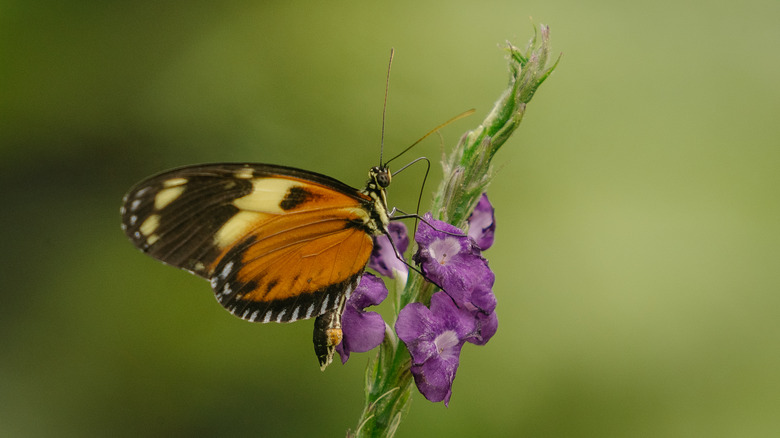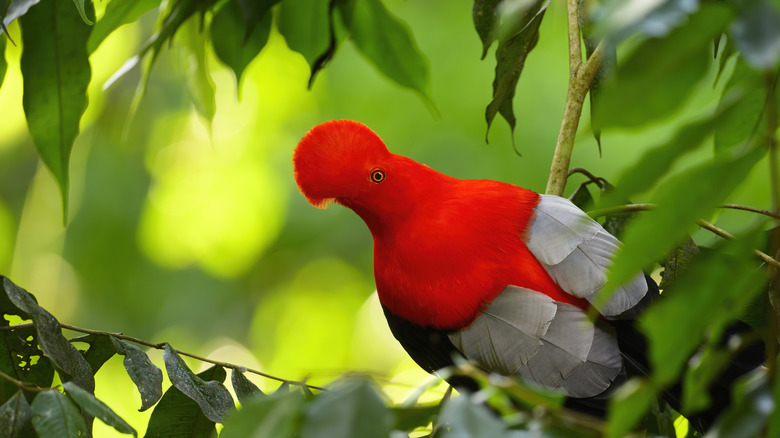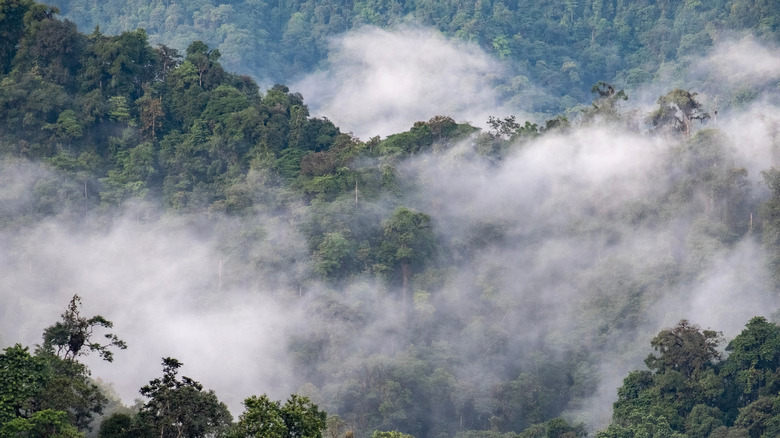Ecuador's Tropical Cloud Forest Is A Playground Brimming With Orchids And Butterflies
When it comes to the world's ecosystems, cloud forests are among the most fascinating. These lush, mist-shrouded concentrations of trees, plants, wildlife, and insects are similar to rain forests in the rich, staggering depth of their biodiversity.
However, unlike rainforests, cloud forests exist at much higher elevations — from 3,000 to 8,000 feet above sea level — hovering over precipitous mountain slopes. This means that they're often blanketed in fog, which causes moss and lichen to grow in profusion, adding to the mystical and mysterious atmosphere.
Ecuador, known for the Galápagos Islands – which is on the ultimate bucket list for a trip to South America – is also home to one of the world's great cloud forests. Protected by a number of parks and reserves, the Ecuadorian cloud forest is easily accessible from Quito, South America's most underrated city. It is a magnet for nature enthusiasts, adventure travelers, adrenaline junkies, or anyone keen to experience one of the most unique natural phenomena on the planet.
An ethereal world bursting with life
Situated on the flank of the Andes Mountains, the Ecuadorian cloud forest is home to a jaw-dropping array of plants and living creatures. This makes it a premier destination for birdwatchers, who go to catch a glimpse of some of the 550 species that live in the forest, such as the golden-headed quetzal, plate-billed mountain toucan, glistening-green tanager, and Andean cock-of-the-rock. The region is also flush with hummingbirds — with 130 of the world's 328 known species native to Ecuador — as well as thousands of butterfly species in all shades and sizes.
A visit to the cloud forest is also a great chance to spot non-winged wildlife, including multitudes of vividly colored frogs, tapirs, ocelots, howler monkeys, three-toed and two-toed sloths, pumas, spectacled bears, and the elusive jaguar. That said, one of the main attractions to the region are the dizzying array of orchids that thrive in the wet, low-light, high-altitude environment. Ecuador hosts over 4,200 species of this alluring flower, many of which can be seen firsthand in the Pahuma Reserve.
When it comes to activities among the forest, visitors face a wealth of options. Many choose to take in these incredible surroundings by strapping on their boots and hitting a hiking trail, while others soak up the splendor from the back of a horse. Exploring hidden waterfalls and swimming holes is a worthwhile pursuit. It's also possible to try your hand at zip-lining and river tubing. All of these activities should be arranged and experienced with a professional local guide.
Where to stay and when to go
From Quito it takes about two hours to reach the cloud forest, with three of the reserves — Mashpi, Bellavista, and Maquipucuna — offering accommodations. You can catch a bus, taxi, or ride-share to the once-sleepy town of Mindo, which acts as a gateway to the cloud forest, making it the perfect place to use as a base of operations.
The premier choice for staying within the cloud forest itself is Mashpi Lodge. This luxurious ecotourism complex offers top-of-the-line accommodations, guide service, fine dining, as well as a forest spa. For comfort and access to nature that's easier on the wallet, try the Bellavista Cloud Forest Reserve & Lodge or Sacha Urco Lodge, and for a tighter-budget option, book a bed at Hostal Cloud Forest.
It's possible to visit Ecuador's cloud forest year-round. While always moist and drizzly, the region is drier from June through December. But be sure to pack a raincoat, warm clothes, and other outdoor travel gear you may need, as things can quickly get wet and chilly given the high elevations.


